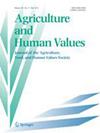The challenges of implementing antibiotic stewardship in diverse poultry value chains in Kenya
Abstract
This paper investigates the challenges of implementing antibiotic stewardship – reducing and optimizing the use of antibiotics – in agricultural settings of Low- and Middle-Income Countries (LMICs) as a strategic part of addressing the global problem of antimicrobial resistance (AMR). It does so through analysis of the rapidly transforming yet diverse Kenyan poultry sector, characterized by growing commercial operations alongside traditional smallholder farming. Our research involves interviews with farmers, processors, policymakers, and agro-veterinary stores in these settings. We blend Chandler’s (2019, p. 8) notion of “antibiotics as infrastructure” with value chain frameworks to understand how the structural role of antibiotics in agriculture plays out through contrasting value chains, with different implications for stewardship. Weak regulation and intense market-based pressures are shown to drive widespread antibiotic use in poultry value chains involving small- and medium-sized farms supplying open markets. Antibiotic stewardship through adherence to agricultural and food safety standards is more evident, though unevenly observed, in value chains involving large commercial farms and processors supplying corporate buyers. Our findings reveal the complex structural roles of antibiotics in maintaining producer livelihoods in an intensely competitive and heterogeneous Kenyan poultry sector. This highlights challenges with applying global AMR policy to transforming food systems in LMICs without appropriate translation. We argue that attempts to reduce and optimize the use of antibiotics in agriculture must be informed by nuanced understandings of the roles of antibiotics in food systems in specific places including where very different scales and models of farming and value chain co-exist.

 求助内容:
求助内容: 应助结果提醒方式:
应助结果提醒方式:


